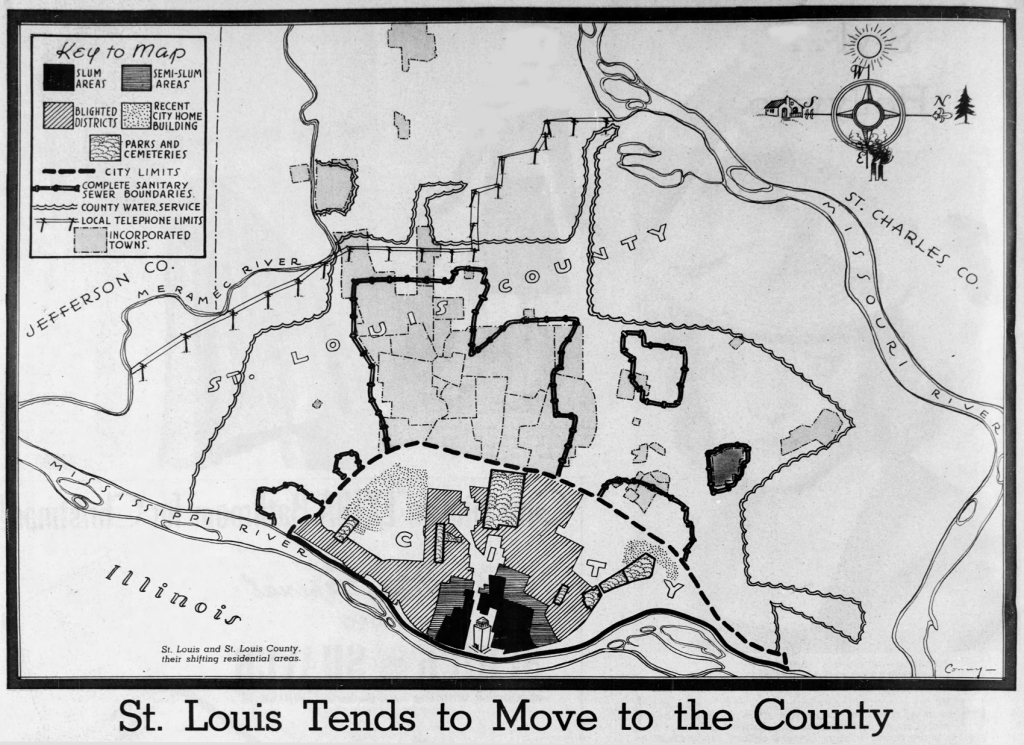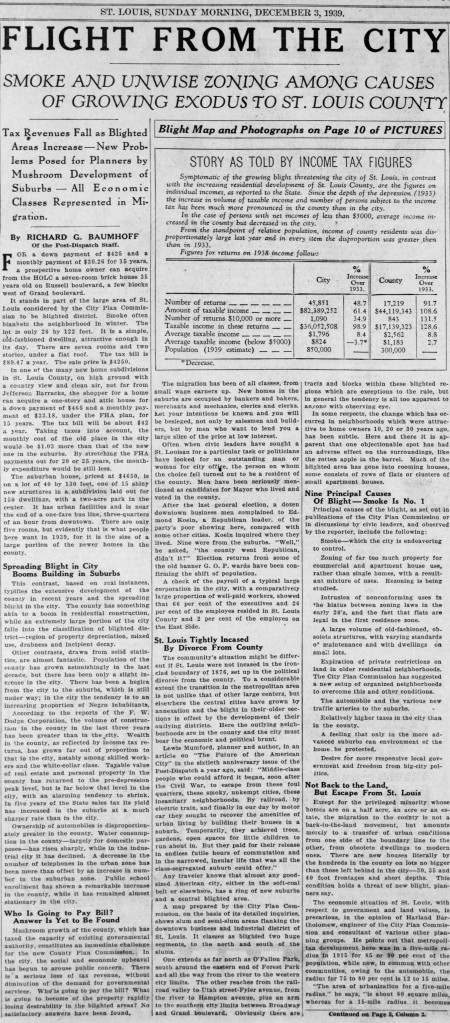Well before the post-war exodus, St. Louis planners were sounding the alarm about the rapid development of St. Louis County while the city was stagnating.
The Post-Dispatch published a detailed report on Dec. 3, 1939. An excerpt:
The county has something akin to a boom in residential construction, while an extremely large portion of the city falls into the classification of blighted district – region of property depreciation, mixed use, drabness and incipient decay. Other contrasts, drawn from solid statistics, are almost fantastic. Population of the county has grown astonishingly in the last decade, but there has been only a slight increase in the city. There has been a hegira from the city to the suburbs, which is still under way; in the city the tendency is to an increasing proportion of Negro inhabitants.
The causes of the population shift, according to the coverage, included automobilesd, higher city taxes, weak zoning laws, old housing stock in the city, air pollution and, not insignificantly, the 1876 split of the city and county — the same issues that bedevil the city today. (Left unsaid, but implied: white flight from the “increasing proportion” of Black residents.) The story also offered a prescient warning: the county would eventually face the same challenges.
Measured by population, it’s clear that growth is over, at least in the core of the metropolitan area. In 1950, when the city’s population hit its highest-ever point, the combined population of St. Louis and St. Louis County was 1,263,145. In 2022, the estimated combined population was 1,276,992. That represents an increase of just 1 percent. (Originally posted Dec. 28, 2023)



